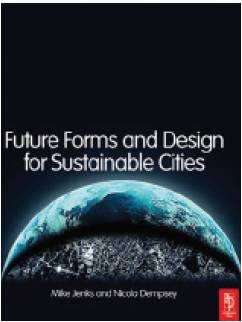The Book has presented with examples the latest research into urban forms and the ways in which they can be designed to be more sustainable , a lot has been written about the influences that can be said to affect the urban form like- technological , social , economical , institutional , geographical etc.
At the very initial stages , book tells how the conceptual ideas work when put together in practice through a range of policies & strategies , with an objective of achieving sustainability .It tells about the role of city’s character in establishing it as a sustainable urban form . The essence of cities lies in the large no. of diverse and intense connections and activities , where people live , work and play .
Urban Space is described as a place for the community rather than for an individual , and public buildings like those for –government , education , culture and commerce play an important role in providing a focus for citizens . Hence links the past , present and future .
Explaining the changing form of the city , the cities have had complex spatial layouts reflecting the multiplicity of human exchanges . The layouts , landmarks and public spaces all contribute to each city’s distinctive sense of identity .The Intelligent Building : does not have to involve high levels of technology , instead the study related building intelligence to location , including issues of ease of access . With the examples of tokyo ( Japan) and Randstad (Netherlands) , Okabe demonstrates the monocentric & polycentric configurations respectively .and suggests that the polycentric urban system is a more sustainable form than monocentric . The concept of Intelligent city by Briggs – has “ Social Equity as its focus ,and putting people back
at the centre of the urban agenda ”.
With the examples of tokyo ( Japan) and Randstad (Netherlands) , Okabe demonstrates the monocentric & polycentric configurations respectively .and suggests that the polycentric urban system is a more sustainable form than monocentric .
The book has explained well the designing in higher dense urban areas , where the mega structures is defined as a high density development, which have developed as a provision for growing population . Also , comes the concept of multiple intensive land use (MILU) followed in Hong Kong , which is maximising land resources by a compact urban form .
Sustainable Design Concept by Hulshof – makes use of existing urban roofs cape to intensify development without creating a need of further space thus reducing urban sprawl .The chapter then concentrates on sustainable development in the low density towns .
The design projects undertaken by Cambridge University and MIT dealing with the sustainable rural communities are discussed . The aim of the project was to examine whether innovative change in public policy and spatial design could create sustainable environments .
This section discusses changing work patterns , renewable energy use an assessment of the sustainability of high rise buildings .
As the work pattern changes , so is the demand for a good environment . The chapter by Gillen explores the impact of communications on the workplace and how the new technology can be extrapolated to guide the design of the city . He then talks about the physical and the virtual space and explains when to use it as per the need .The city is an important tool in connecting and maintaining relationships .
The book contains a lot number of theories and concepts forwarded by the professionals ,like – the concept of Solar City : A city that aims at reducing the level of green house gas emissions through a strategy for the introduction of Renewable Energy Systems(RES) and Rational Use of Energy (RUE) to a climate stable and sustainable level .The Oxford Solar Initiative (OSI) has been designed to develop Oxford as a pioneering Solar City .
John Mardaljevic throws light on how quality of life in dense urban areas get affected by the amount of daylight and sunlight access , as Solar access prediction represents an important.
This book review was written by: Abhishek Srivastava


Leave a Reply
You must be logged in to post a comment.